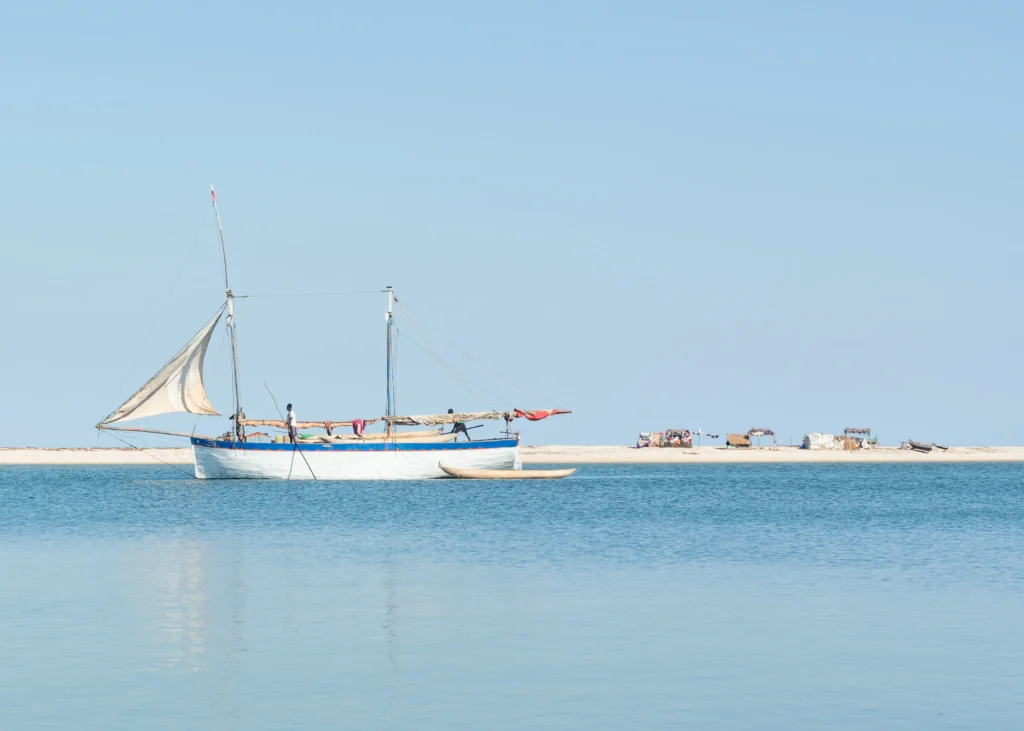Madagascar
In Madagascar, a Breton wind blows through the village of Belo-sur-Mer: the Vezo people, whose name means “sea nomads” in Malagasy, continue to uphold the artisanal heritage of Brittany. They still build schooners today using the 19th-century Breton method. It all began in the mid-19th century. To boost maritime transport and compete with Arab and European ships, King Radama II decided to turn to France to teach his people naval construction techniques. The Joachim family, naval carpenters of Breton origin from Réunion Island, sailed to Madagascar to share their expertise. Unfortunately, when the family arrived on the Big Island in 1863, King Radama II had just been assassinated. His wife succeeded him under the name Ranavalona II. She adopted a completely opposite policy and began expelling foreigners. What followed were forty years of exile and wandering for the Joachim family. It wasn’t until 1904 that Albert, one of the Joachim sons, received authorization to open a marine carpentry school in Belo-sur-Mer. Since then, this valuable heritage, passed down by Albert and his brother Ludovik, has continued to live on—transmitted from generation to generation as a living testament to an enduring traditional craft. On the west coast of Madagascar, schooners range in size from vessels carrying 12 tons of cargo to giants that can hold up to 40 tons. A shipwright, often assisted by his son, typically dedicates about a year to building a schooner—provided that funding is steady and the construction is not delayed.
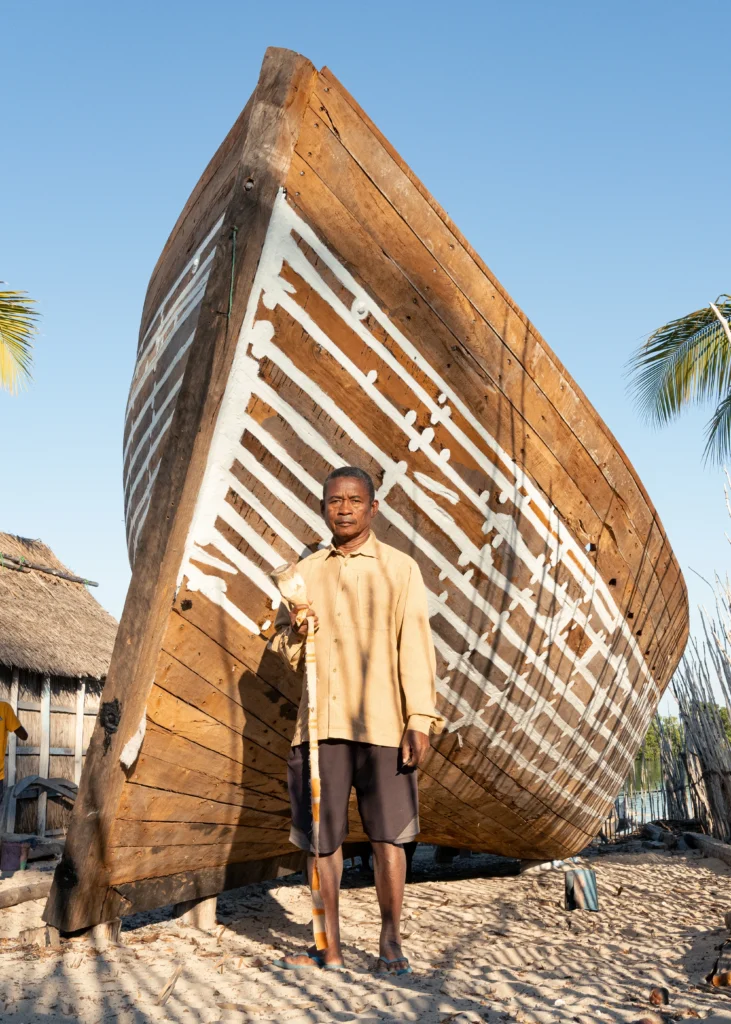
HE’S BEEN WORKING ON IT FOR OVER A YEAR AND A HALF. ©Malo Thierry
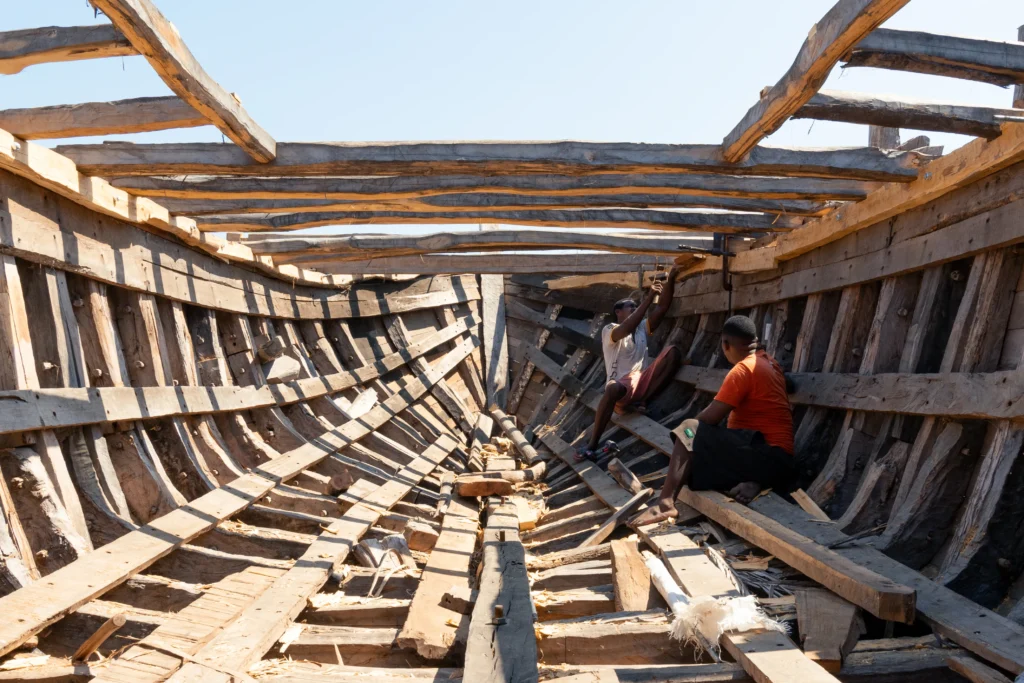
However, this tradition faces considerable challenges. The cost of a schooner varies between 20 and 40 million ariary (around 4,000 to 8,000 euros). A colossal sum for the Malagasy, whose legal minimum monthly wage is just 200,000 ariary (or 40 euros). With this investment, the owner, often the carpenter himself, can hope to keep his vessel in good condition for 20 to 30 years, provided he gives it regular maintenance. Schooners, like their cousins the dhows, are called “botry” in Malagasy. However, there are marked differences between them. The schooner is characterized by its two masts and auric sails, while the dhow has a single mast and a triangular sail. Their origins also diverge: the dhow was brought to the island by Arab populations, while the schooner was imported by Europeans, notably the Joachim family from France. The final major difference lies in the stern of the vessels: unlike the flat transom of most dhows, the schooner has a pointed stern similar to its bow.
Thanks to their keel-less design and shallow draught, these vessels are very popular with the Malagasy, enabling them to access shallow lagoons and dock directly on beaches. Today, schooners remain one of the main means of transporting freight along the Malagasy coast. Unlike land vehicles, which are often impassable during the rainy season, schooners can be sailed all year round. Rising fuel prices and the logistical challenges of getting fuel to these remote areas make sailing not only more economical, but also safer. At Belo-sur-Mer, exported goods include salt from the nationally-renowned saltworks located a few kilometers from the port of Menaky, as well as rare wood cut from the Kirindy Mitea forest and fish caught by the Vezo. In return, the village imports what it cannot produce, such as vegetables, rice and basic necessities, thus perpetuating a cycle of exchanges essential to local life.
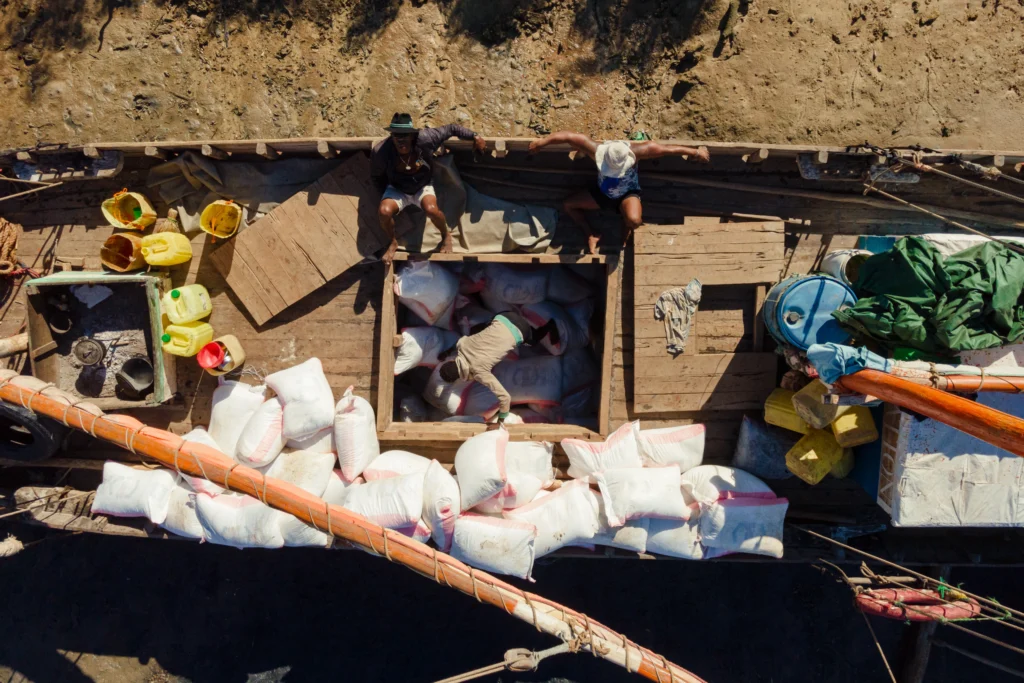
A MAJOR RESOURCE FOR THE REGION, SUPPORTING A LARGE NUMBER OF WORKERS. ©Malo Thierry
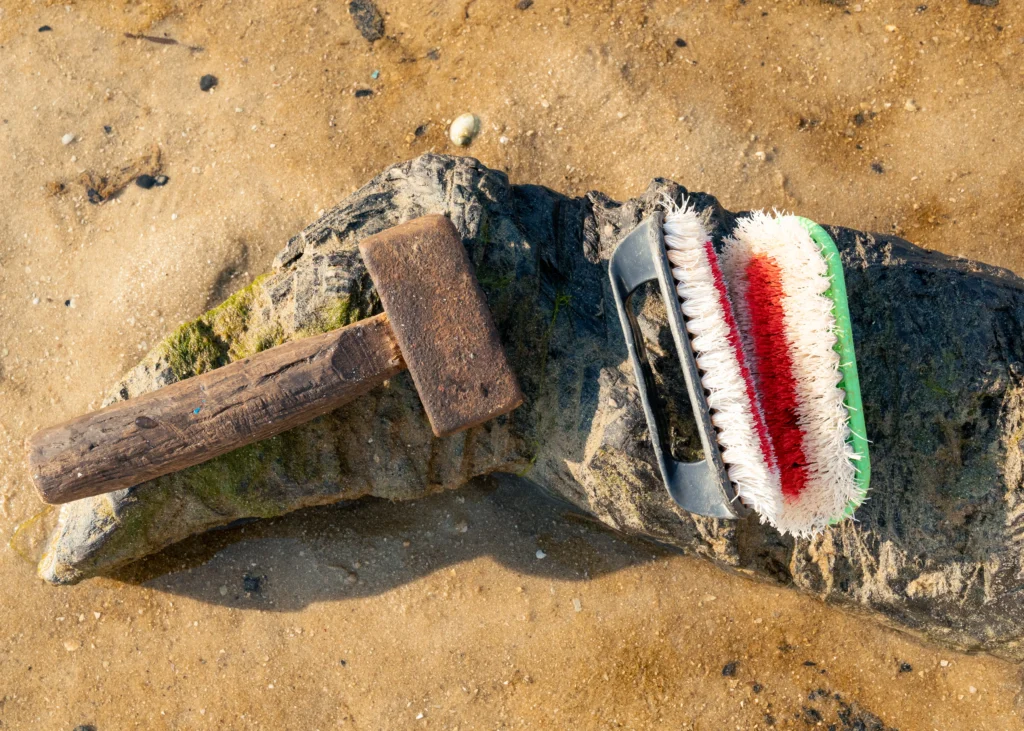
CONTEMPORARY TOOLS
ARE ADDED TO THE
TRADITIONAL TOOLS. ©Malo Thierry
Over the past twenty years, the growing demand for schooners has led to a proliferation of shipyards. Unfortunately, this explosion in the sector poses a major problem when it comes to the essential resource needed to build these vessels: wood. Building a schooner requires hundreds of tree trunks, often from the protected Kirindy Mitea forest. The scarcity of the trees used, which grow too slowly, leads to deforestation that is often illegal. This over-exploitation of resources not only jeopardizes the supply of wood for schooner construction, but also threatens the region’s fragile ecosystem, and ultimately this ancestral maritime craft.
